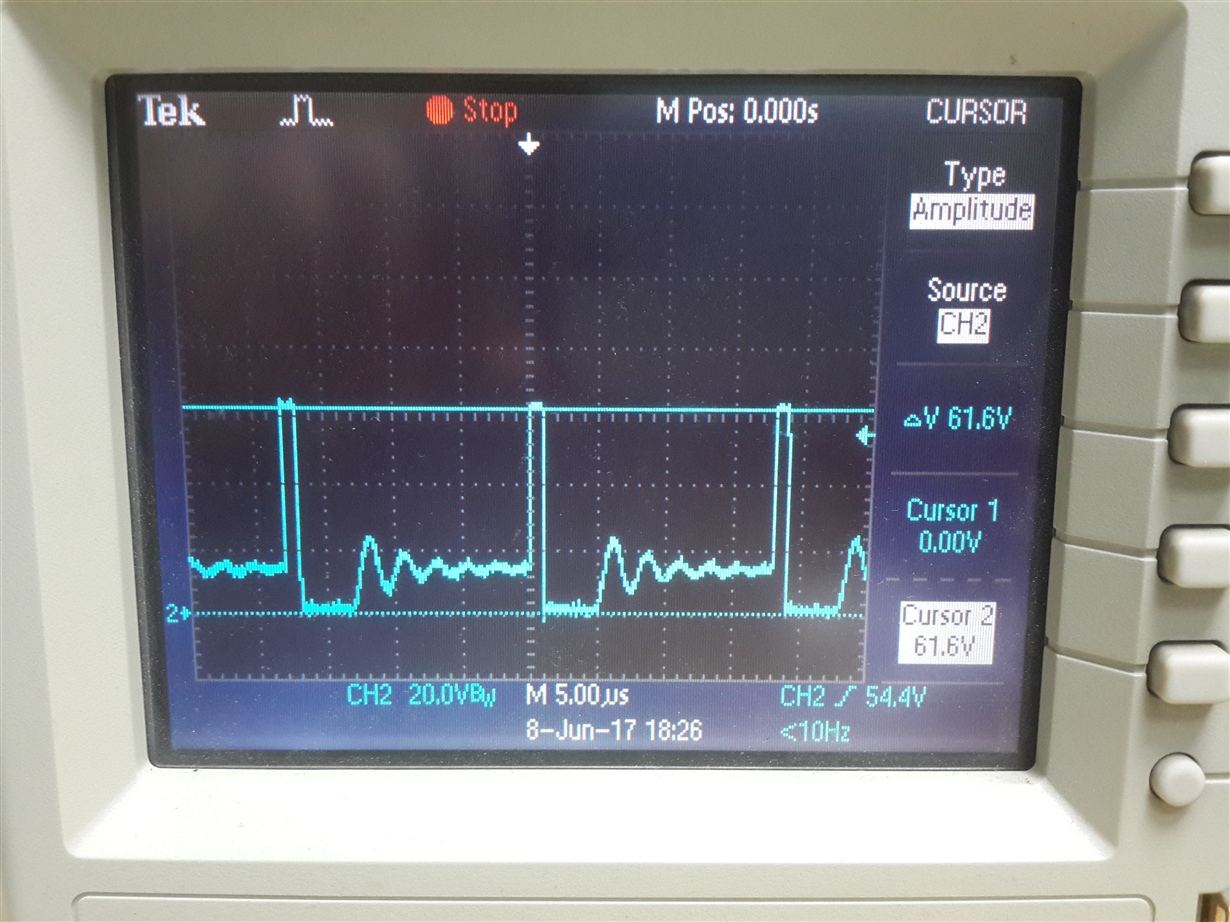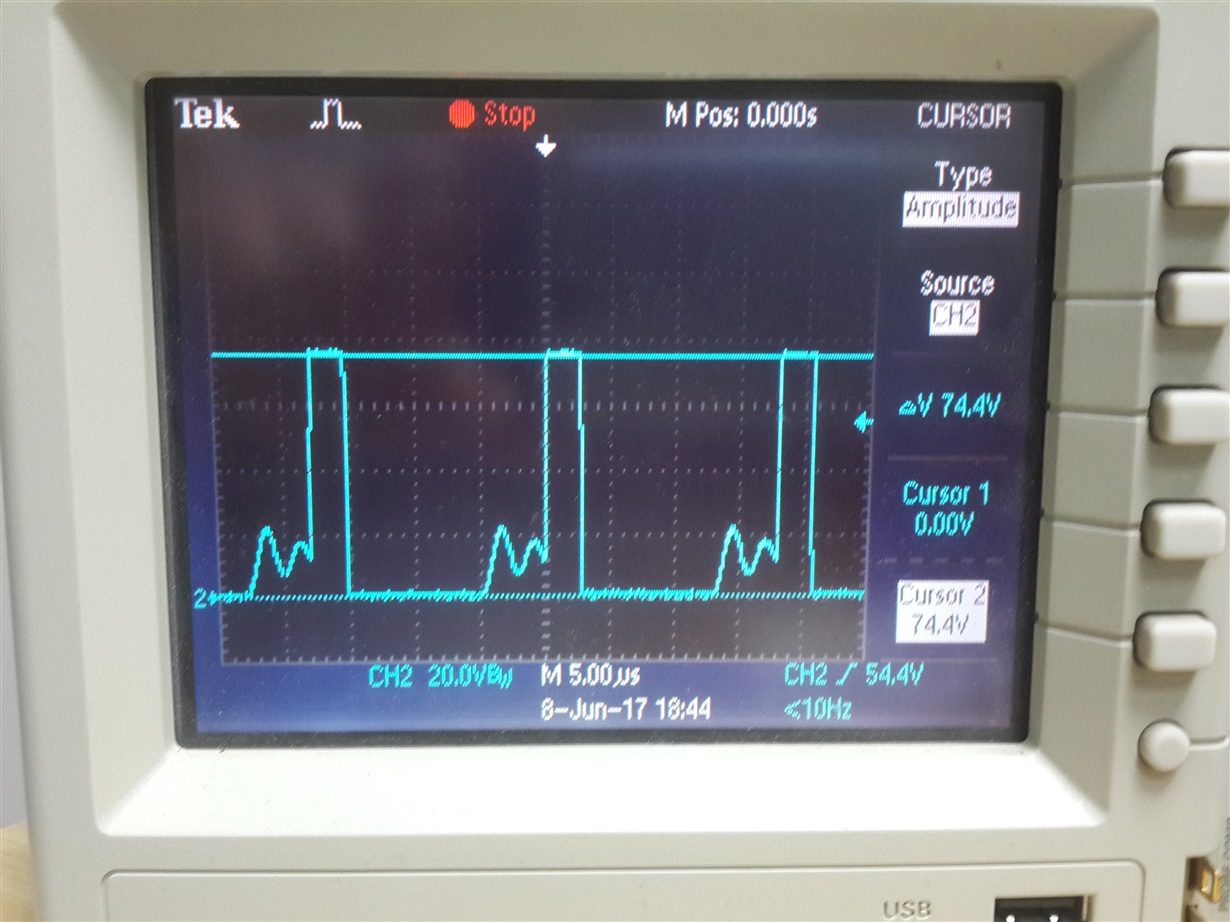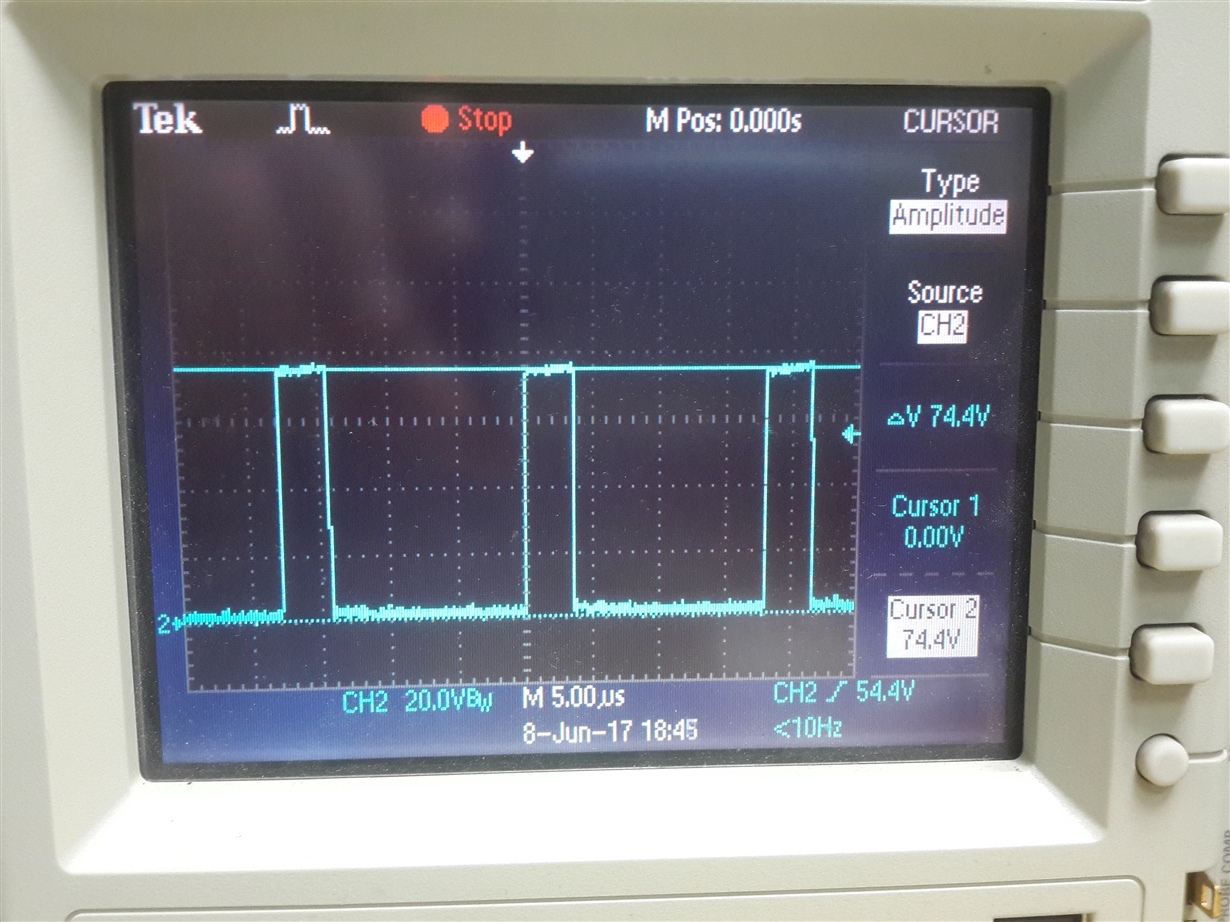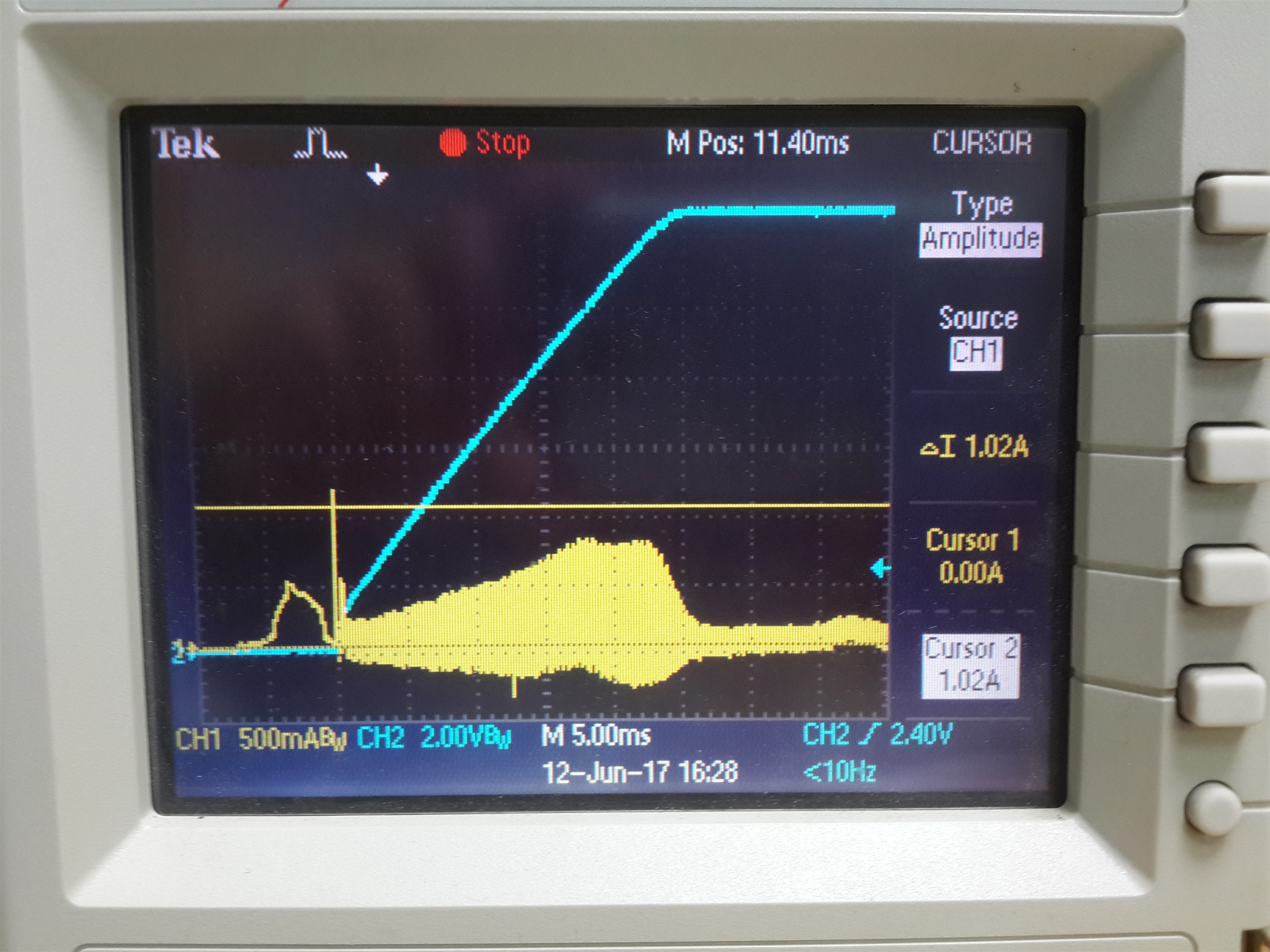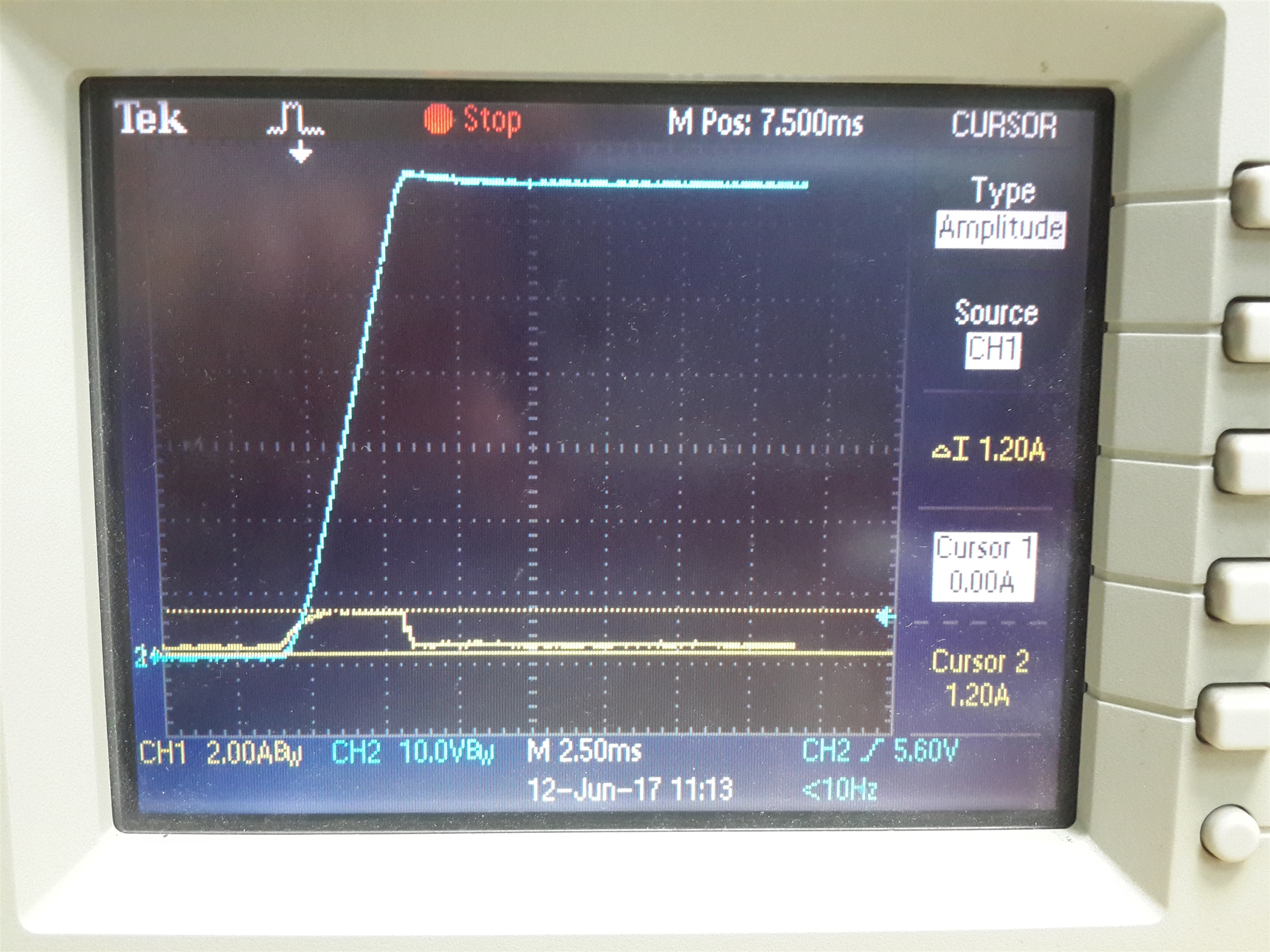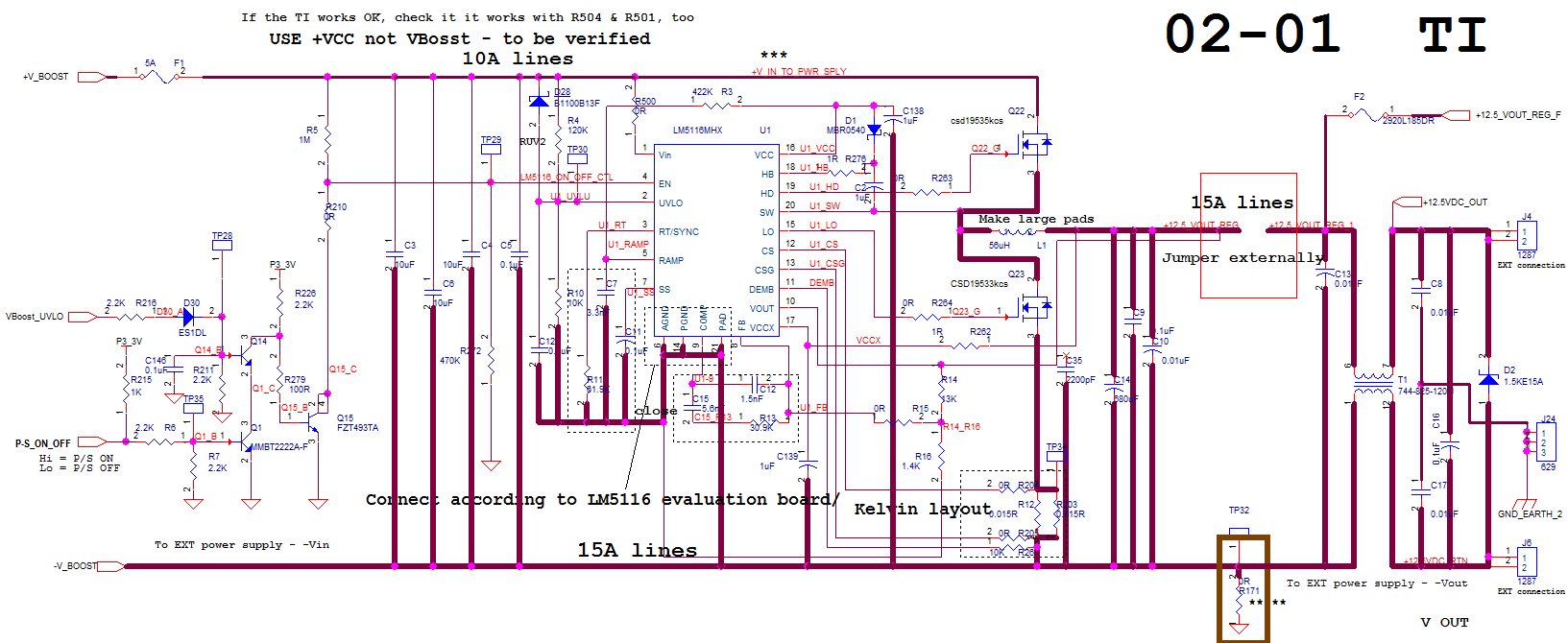Other Parts Discussed in Thread: CSD19533KCS, CSD19535KCS,
Hi,
I'v designed a Buck converter using Webench.
The controller is LM5116MHX/NOPB . (webench.ti.com/.../webench5.cgi
The MOSFETs are different from the design, made by TI (CSD19535kcs & CSD19533kcs)
The phenomena is:
1- No load: if i connect the input to a 31VDC supply, by connecting the + probe (step input), the converter works fine, and i get 12.6VDC output.
2 - No load: if i do the sane with 63VDC (step input), the two MOSFETs and sometimes the LM5116 fail. The MOSFETs are short circuit, and LM5116 fails too.
3 - if i tweak the power supply from 31VDC to 63VDC, slowly, the converter works excellent., up to 10A. The waveforms on DH, LO & SW have square, no ringing at all (from 0.8A to 10A load).
Waveform with no load, 63VDC, SW node. The waveform improves as the load current goes beyond 0.8A . As the current rises towards 1A, the ringing slides to the Right, until it disappears.
Waveform at 0.5A
Waveform, at full load, 63VDC, SW node
the design


